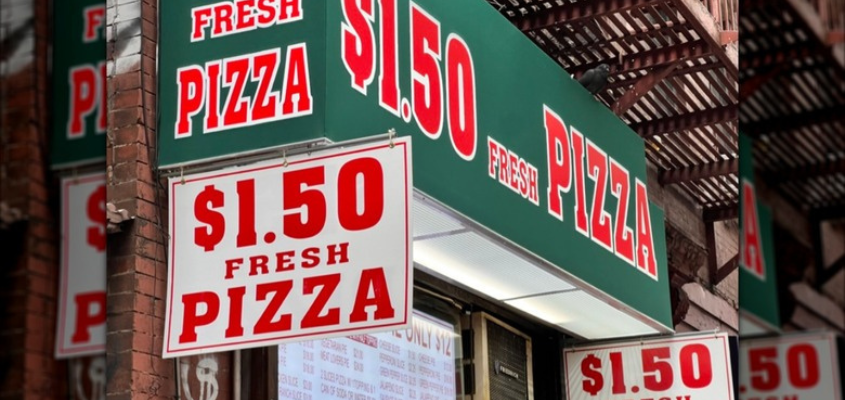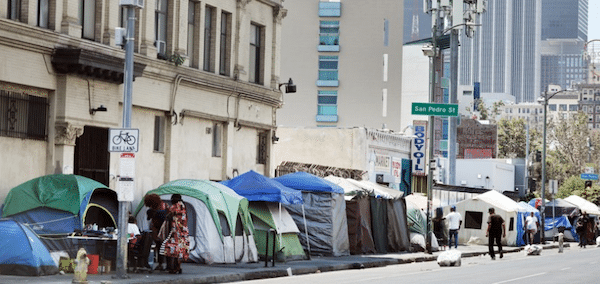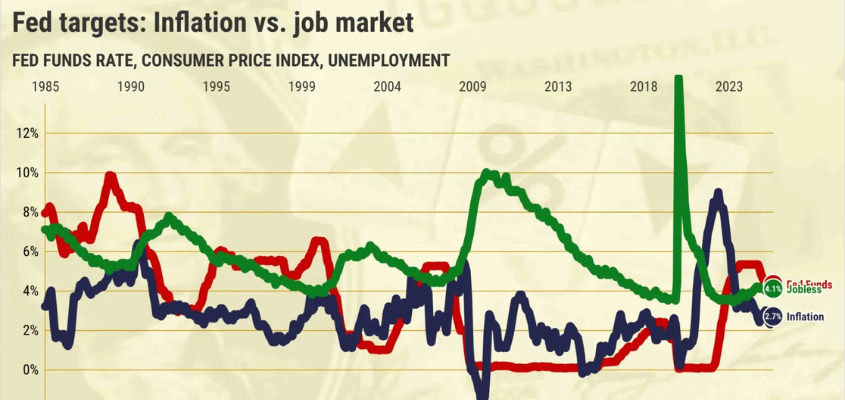(I've posted this work not because of it's premise, that neoliberalism ruined the country starting in the 70s. This is a common refrain among 'progressives' who profess to believe that the USA was hunky-dory until 'neoliberalism' corrupted capitalist democracy. Ignoring the fact that 'corruption' is just bizness and baked into capitalism. In fact this 'ism' is simply the evolution of more efficient capitalism, more efficient profit and wealth gathering for the owning class. These practices were as inevitable as the tragedies which they negligently spawn. Even into the 60s capital was somewhat haphazard and uneven in it's profit seeking. No longer. Maximum efficiency, practiced under the excuse of 'due diligence' is the rule and only fools and losers ignore this fact of capitalism.
What this article is good for is it's examination of the mechanism, let's call it the selection process, which has resulted in the greatest wealth disparity in history and ecological disaster. In that it is rather fascinating, like an autopsy...)
*****
Sylvia Demarest: How Corporations became people, money became speech, usury was legalized, and the civil rights movement was used to advance neoliberalism
July 13, 2025
By Sylvia Demarest, Substack, 7/6/25
Sylvia Demarest is a retired trial lawyer.
On May 7th this Substack published an essay titled: The Chicago School, law and economics, and the monopolization of the American economy. The essay discussed how the counter-revolution against the New Deal began at the University of Chicago with the organization of a Free-Market Study Group, how it progressed through the Mont Pelerin society, the Chicago School of Law and Economics, and various organizations, leading to the creation of neoliberalism and its takeover of our economy and legal system. This essay will further this discussion by reviewing the history that led to the judicial decisions creating corporate personhood, equating money with speech, dismantling the protections against usury, and allowing money to dominate our elections.
The end of “the great leveling” and the civil rights movement
The era between the New Deal and the rise of neoliberalism became known as “the great leveling”. This period was characterized by the historically low disparity between the wealthiest and the poorest people in our society. It was also a time of historically high economic growth, leading to the rise of a huge middle class in the USA.
Left out of this economic prosperity was a huge underclass of Black citizens burdened by economic and racial discrimination. The civil rights laws of the 1960’s were designed to address this discrimination, but the political backlash to these laws ended up undermining the political majorities that had voted for and benefited from the New Deal’s mixed economy.
This era was also characterized by anti-war fervor, race-baiting, and the rise of a segment of society labeled the “Silent majority”. After the passage of civil rights legislation in the 1960’s, Nixon’s “Southern Strategy” used the backlash to these laws to separate southern whites from the Democratic Party. Sadly, it was racial fear, resentment, and the militarism of the Vietnam War, that killed the political consensus behind the New Deal. Americans did not realize they were voting for laissez-faire economics, because Nixon was not campaigning on free market ideology, but on grievance and fear. The policy was bought and sold politically as a promise to stop the protests, stop the riots, and stop a civil rights movement the white majority believed had gone haywire, by opening public accommodations, and using bussing to integrate all white schools.
Economists in the emerging school of neoliberalism such as Alan Greenspan, Gary Becker, George Stigler, and Milton Freedman were suspicious of civil rights laws, despite finding discrimination distasteful. Economists, such as Gary Becker and Geroge Stigler argued that the answer to discrimination was the free market. In other words, government intervention in the economy had created discrimination. In a free market, they assumed, discrimination would die out because it created excess costs for the discriminatory white employer. These theories were wrong.
These economists were dreaming, there was no theoretical society where markets were efficient, opportunity was equal, and trade was based on price. Under Jim Crow, discrimination was not a cost, especially to whites who had long benefited from racial discrimination. Discrimination had created its own market forces. But, unfortunately, the damage to the New Deal consensus was done.
Neoliberalism re-defines corporate social obligations
Corporations are legal constructs created by social agreements and enforced by state law. The Constitution gives states the ultimate power over chartering and regulating the corporations they create. Corporations were historically seen as having public duties, not only because most had benefited from public investments, government contracts, and trade protections, but because state charters mandated these duties. In 1969 the chairman of the Securities Exchange Commission noted the power and influence of corporations in society urging them to “meet the needs of the nation as a whole.”
The civil rights crisis led to discussions about corporate civic obligations. These discussions were influenced by the publication of popular business books in the 1950’s and 1970’s. The outside Counsel of General Motors at the time, Donald Schwartz a partner at Williams & Connolly, noted that “social concerns should not be an afterthought but central to the corporate mission. “
Neoliberals such as Milton Freedman disagreed declaring that such statements were preaching nothing “but unadulterated socialism” that was “undermining free enterprise”. Freedman issued one insult after another; the idea of corporate responsibility was “faddish and unscientific”, “lacking in rigor”, and undermining the “foundations of a free society.” Friedman concluded that “corporations have no higher purpose than maximizing profits for their shareholders.”
Lewis Powell, the Powell Memo, and Powell’s tenure on the US Supreme Court
In February of 1971 one of the most significant documents in the neoliberal transformation of America was written by Lewis Powell. Powell, a well-respected corporate lawyer, issued a memorandum titled: “Attack On American Free Enterprise System”. The memo was addressed to Eugene Sydnor, Chairman of the US Chamber of Commerce. Powell claimed that the American economic system was “under attack”. The victim of the attack was the “American business executive”. Attacking consumer advocate, Ralph Nadar, directly Powell claimed that “economics” had to be protected from Nadar’s “economic illiteracy” about “tax loopholes” and other anti-corporate rhetoric. Putting the words rich and poor in quotations, Powell warned that setting “business against the people” was “the cheapest and most dangerous kind of politics.”
Powell advocated two approaches to countering democratic demands on corporations. First, he advocated a long-term plan to change hearts and minds through propaganda via education and the media. Second, Powell advocated the quiet accumulation of legal and political power through legal changes hidden from public view. The first was addressed by the Chicago School of Law and Economics, and other organizations, including textbooks, publications, seminars, and training like-minded people to serve as scholars and jurists, The second was to change law itself through changes in judicial jurisprudence.
The US Chamber of Commerce organized a task force of 40 executives, funding was raised, and plans were set in motion to implement Powell’s recommendations. For example, in 1972 the Business Roundtable was organized and in 1973 the Heritage Foundation was founded. Other organizations founded as the result of the Powell Memo include, the American Legislative Exchange Council (ALEC) in 1973, the Cato Institute in 1977, and the Manhattan Institute in 1978. Money from Coors, John Olin, the Bradelys, the Koch Brothers, and other wealthy businessmen provided long-term financial support for these efforts and the scholars and functionaries who carried out the resulting plans. A permanent structure supporting neoliberal policy and reforms was organized. This structure is still active today–all funded by tax deductible charitable contributions under 501 c 3 of the Internal Revenue Code.
Lewis Powell on the US Supreme Court
Two months after issuing his memo, Powell was nominated by President Richard Nixon to become an associate justice of the US Supreme Court. Powell was 65 years old when he was nominated, too old to really take advantage of life tenure, but such tenure was not the reason for his appointment. Powell was appointed to inject changes in the law in specific areas, banking, corporate power, corporate personhood, money in politics, and interest rates. Powell proved to be extraordinarily effective.
Once Powell was confirmed in1972 he began to quietly transform the law. Over time Powell planted neoliberal principles into the law, empowering corporations while curtailing state power. Powell planted ideas into court jurisprudence that did not manifest for years. This was despite being considered a moderate. For example, the Burger Court decided Roe v. Wade, in 1973, with Powell voting with the majority.
Commercial Speech: One of the first cases providing Powell the opportunity to direct the law, was a case brought by Ralph Nader’s organization challenging a Virginia law prohibiting pharmacies from advertising drug prices. The case was Virginia State Pharmacy v. Virginia Citizens Consumer Council Inc. The argument was that unlisted prices were harmful to consumers who could not seek better alternatives. The fatal error was to argue the case on First Amendment grounds, that prices were information the public wanted to hear. This allowed the First Amendment to be applied to commercial speech. While the consumer group did not ask the court to determine that prices (corporate speech) was protected by the First Amendment, they handed the Court the opportunity to make that distinction. The majority opinion, written by Justice Blackmon, opened the door through which Powell would maneuver the First Amendment toward the elimination of any distinction between corporate and individual speech.
Rehnquist was not fooled and dissented lamenting the elevation the advertisement of products to the ideological market place of ideas, seeing this as an over-extension of the First Amendment. Rehnquist concluded by arguing that the majority had not only failed to accord proper weight to the judgment of the legislature but that the protection of the First Amendment ought to be limited to political and social issues.
Campaign limits: The next significant case in 1976 was Buckley v. Valeo. The issue before the court was how much Congress could regulate campaign contributions without running afoul of the First Amendment. The case did not deal with “corporate speech” but with limits on spending by wealthy people on political campaigns. A complex 150-page opinion by the 5-person majority (including Powell) upheld many of the mandates but struck down the limits on individual spending. This meant that a person or group, including the candidate, could spend as much money as they wanted on a campaign. The majority waived away any government interest in protecting elections from “the corrosive influence of money” or in “equalizing” democratic participation, holding that the idea that the government could restrict the speech of some elements of society to enhance the voice of others was “wholly foreign to the First Amendment”.
The dissent was not fooled. Justices Marshall and White argued that the majority had evaded the law’s purpose and had enabled endless spending. Marshall argued that even the appearance that the political arena was the exclusive province of the wealthy was a valid governmental concern. Unfortunately, after Buckley the government’s hands were tied.
Corporate Free Speech: In 1977 the case of First National Bank of Boston v. Bellotti came before the court. The issue was a long-standing Massachusetts law that prohibited corporate spending on ballot initiatives unrelated to the company’s business. The case divided the court. Some justices felt that since corporations were creatures of state law, the state had the right to regulate them. Rehnquist again raised the same red flags he had raised in Virginia Pharmacy and quoted Chief Justice John Marshall who had clearly distinguished the First Amendment rights of corporations from those of natural persons.
Powell sprung the trap, pointing out in a memo to the court that it was “too late” to hold that persons who elect to do business in the corporate form could not express opinions through the corporation, and for the court to turn its back on this now would be a serious infringement of corporate First Amendment rights. Powell wrote the opinion stating that there was “no question” that corporations had First Amendment rights, but how far those rights extended. Powell’s response was they extend very far.
In the case of Central Hudson Gas and Electric v. Public Service Commission of New York in 1980, Powell took the opportunity to carry the court further along in interpreting the First Amendment as a shield for corporations against state regulatory laws.
The progression of cases: Each of these decisions can be seen as a step-by-step process leading to the 5-4 decision in 2010 in Citizen’s United v. Federal Election Commission, eviscerating federal laws on campaign spending and endorsing corporate personhood and First Amendment rights for money as majority jurisprudence. In doing so the court relied heavily on Buckley.
The progression is as follows: Buckley cleared away all constraints on political spending by wealthy donors and groups; while Virginia Pharmacy, Bellotti, Central Hudson Gas, and Citizen’s United extended free speech protections to corporations. Citizen’s United cleared the last remaining barriers protecting democracy from the corrupting influence of money. Now we have “dark money” and “soft money” as well as protection for commercial speech and for money, in effect, using the First Amendment to achieve deregulatory goals amounting to theft, waste, and graft. This is also known as empowering “rent seeking”. This kind of corruption increasingly crowds out productive activity.
Neoliberalism has succeeded, and in the process, has corrupted the First Amendment and the Constitution.
The impact on campaign spending: After the Buckley case the amounts spent on presidential campaigns rose from $20 million in 1960–to $107 million in 1980–to $186 million in 1992–to $300 million in 2000–to $696 million in 2004–to $1 billion in 2008, to $2 billion in 2016–to $14.4 billion in 2020–to who knows how much in 2024. These amounts do not include “dark money” nor the cost of other campaigns at the local, state, and federal level.
State laws on corporate campaign donations: Many states, including Montana, had laws on their books banning corporations from contributing to political campaigns. Montana’s law was passed in 1912. In the case of American Tradition Partnership Inc v. Bullock, the Montana Supreme Court upheld the constitutionality of that law. In 2012 a 5-4 decision the United States Supreme Court reversed that decision citing United Citizens as precedent. The Brennan Center had submitted an Amicus supporting the law, to no avail. There are no longer any state laws restricting corporations from spending money on political campaigns.
Usury and interest rates: For decades many states had limits on the interest that could be charged on debt. The case of “Marquette National Bank of Minneapolis v. First of Omaha Service Corp.” decided in 1978 established that state anti-usury laws cannot be enforced against nationally chartered banks based in other states. This allowed banks and other business to charge higher interest rates. This ruling enabled banks to offer credit cards with interest rates that exceed state limits. One state that allowed unlimited interest to be charged was South Dakota, where most of the credit card companies are now domiciled. This means credit card customers who cannot pay their balances in full every month, are charged as much as 35% interest on their balances.
The centrality of Alan Greenspan, and the Fed, to the survival of neoliberalism
It is difficult to express the dichotomy between what economists like Alan Greenspan, Milton Freedman, George Steigler were preaching about the “free market” and the actual results of these policies. The example of Greenspan’s economic legacy clearly demonstrates this dichotomy.
Before the outbreak of the Watergate Scandal, President Nixon asked Alan Greenspan to head up the President’s Council of Economic Advisors. By the time Greenspan took the job in 1972, Nixon had resigned. Greenspan remained part of the inner circle of presidential advisors for every subsequent president except for Jimmy Carter (1976-1980). Perhaps no other individual left more of a mark on the US and the global economy than Alan Greenspan.
Greenspan was made Chairman of the Federal Reserve by President Ronald Reagan in 1987–he served until 2006. By the time he left office, Greenspan held more power over global markets than any president he had served.
Here’s Mehrsa Baradaran:
“Greenspan’s legacy as Fed chairman was a financial system so reliant on Fed support that it is near impossible today to delineate where government economic policy ends and financial markets begin. In crisis after crisis, Greenspan’s policy “stabilized” the market, which led banks to take risks with confidence that the Fed would step in to save them, if necessary. The libertarian economist who once convinced Nixon that the only solution to America’s apartheid regime was “to help the Negro help themselves” took a much more helpful stance towards the market. Each time a crisis loomed, Greenspan plied banks with loans, bought distressed assets to place on the Fed’s balance sheets, lowered interest rates, purchased Treasury bonds to boost bank profits, and promised any“backstops” necessary to return banks to profitability. The measures were so common that they came to be called “the Greenspan put”.
The policies followed by Alan Greenspan were completely different from the free-market rhetoric employed by the neoliberals. The result of Greenspan’s policies? Wall Street profits are guaranteed by the public, and wealth is transferred from the bottom to the top of the economy. Meanwhile, the risk of loss is transferred from the wealthy to public. This is the exact opposite of what neoliberalism promised.
Neoliberalism should be seen not as a reaction to socialism abroad or Keynesianism at home, or even as a backlash against the Civil Rights movement, but as a clever way for entrenched power to gain and keep wealth and power.
Conclusion
The contribution of people like Alan Greenspan and Lewis Powell to our current political and economic reality has been enormous. Lewis Powell contributed to the creation of an infrastructure supporting neoliberalism that endures to this day, making political and economic reforms more difficult. Justice Powell contributed to a jurisprudence that gives corporations the same constitutional protections as people and deems the spending of money equivalent to speech. This jurisprudence has turned our democracy into an auction were politicians and policies are sold to the highest bidder. Yet, many of these decisions was by a bare majority of the court, 5 to 4, and could be reversed by a similar majority.
There is dwindling public support for neoliberal policies or for the corrupting influence of money in politics. Unfortunately, the public is uninformed about the history of how these policies and opinions came about. If properly informed, there is little doubt the vast majority would support serious reforms in every area discussed in the Substack. This is why education and discussion are so important. Please, help spread the word by encouraging your friends to sign up for a free subscription to this Substack so we can continue to explore where we are, how we got here, and what can be done to reform our politics and economics.
***
On a related note, The Lever reported on July 8th the following:
Citizens United 2.0, here we come. While corporate interests spent a whopping $2 billion secretly influencing the 2024 election, the dark money problem is poised to get even worse. That’s because the Supreme Court has agreed to hear a case this fall that could abolish some of the last barriers separating political candidates and wealthy donors’ unlimited buckets of cash. National Republican Senatorial Committee v. Federal Election Commission, which originated from a lawsuit by now-Vice President JD Vance, is a corruption bomb designed to allow SCOTUS to permit more unfettered, untraceable corporate election influence than it did in its landmark 2010 Citizens United decision.
Friends in high places. While Vance has since exited the case, he and his colleagues filed suit in 2022 against federal restrictions limiting coordination between national party committees and candidates. If those rules are abolished, corporate interests could spend freely on these committees as an end-run around limits on how much they can directly give candidates. While the suit lost in the Sixth Circuit Court of Appeals, several of the judges agreed with its argument and urged SCOTUS to take up the case — including one who formerly employed Vance’s wife, Usha Vance, when she worked as a law clerk.
The gang’s all here. Before SCOTUS took up the case, a who’s who of conservative heavyweights filed amicus briefs urging it to do so. That included not just the Republican Governors Association and Sen. Mitch McConnell (R.-Ky.), but also the U.S. Chamber of Commerce, D.C.’s most powerful business lobbying group, and the Institute for Free Speech, a nonprofit funded by the Leonard Leo-helmed dark money network that helped install five of the six current conservative justices. Even the Trump Justice Department joined in, admitting in its brief that while it “has a longstanding policy of defending challenged federal statutes,” the campaign finance law in question “violates core First Amendment rights.”
Get ready to rumble. SCOTUS also allowed three major Democratic groups — the Democratic National Committee, the Democratic Congressional Campaign Committee, and the Democratic Senatorial Campaign Committee — to intervene in the high-stakes case. Depending on the results, the decision could further corporate power’s decades-long master plan to legalize corruption. As one Sixth Circuit judge warned, the case has the potential to allow “the Supreme Court to rework campaign finance, First Amendment, and constitutional law in new and audacious ways.”
Reporting contributed by Joel Warner
https://natyliesbaldwin.com/2025/07/syl ... iberalism/





